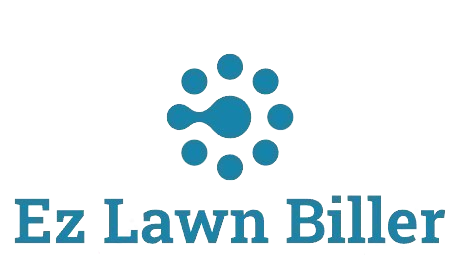Maximize your productivity and efficiency with the right software tools. Discover the top tools that can help you streamline your workflow and enhance your software usage.
Top Tools to Help You Use Software Effectively
In today’s fast-paced digital world, using software effectively is crucial for personal productivity and organizational efficiency. With countless applications and tools available, it can be challenging to identify which ones will truly assist you in maximizing your potential. This blog post delves into the top tools designed to enhance software usage, focusing on their features, benefits, and how they can transform the way you work. Whether you are a small business owner, a freelancer, or part of a large organization, the right tools can significantly improve your workflow and efficiency.
Effective software usage is not just about choosing the right applications; it’s also about understanding how to integrate them into your daily routine. In this post, we will explore a range of tools that address various aspects of software utilization, from project management to time tracking and communication. By the end of this article, you’ll be equipped with the knowledge to select the right tools for your needs and enhance your overall productivity.
Project Management Tools
Project management is a cornerstone of effective software usage, enabling teams to plan, execute, and monitor their work efficiently. Tools like Asana, Trello, and Monday.com are excellent for organizing tasks and facilitating collaboration within teams. These platforms provide visual representations of project timelines and progress, making it easier to track responsibilities and deadlines.
For example, Asana offers customizable templates that allow users to initiate projects quickly, while Trello’s card system helps in visually managing tasks. A study by the Project Management Institute showed that organizations using project management tools are 28% more successful in meeting their projects’ objectives.
Moreover, these tools integrate seamlessly with other software, such as Google Drive and Slack, fostering better communication and document management. By centralizing project information, team members can stay aligned and informed, reducing misunderstandings and enhancing productivity.
Time Management Tools
Time management is a vital skill for anyone looking to use software effectively. Tools like Toggl, RescueTime, and Clockify provide insights into how you spend your time and help you optimize it. These applications track the time you spend on various tasks and projects, allowing you to analyze your productivity patterns.
For instance, Toggl’s reporting features enable users to identify which tasks consume most of their time, empowering them to allocate resources more efficiently. According to a report by the Bureau of Labor Statistics, effective time management can boost workplace productivity by 25%, highlighting the importance of these tools.
Additionally, integrating time management tools with project management software can provide a comprehensive view of how time is allocated across various projects. This synergy enables better planning and resource allocation, ultimately leading to improved outcomes.
Collaboration and Communication Tools
In an era of remote work and distributed teams, effective collaboration and communication tools are essential for ensuring that team members are connected and engaged. Applications like Slack, Microsoft Teams, and Zoom facilitate seamless communication, enabling teams to collaborate in real-time regardless of their locations.
For example, Slack allows for organized communication through channels, making it easy to discuss specific topics without overwhelming team members with irrelevant messages. Meanwhile, Microsoft Teams integrates well with Office 365, providing users with a unified platform for communication, file sharing, and project collaboration.
According to a study by McKinsey, improving communication and collaboration can increase productivity by up to 25%. By leveraging these tools, organizations can break down silos, foster a culture of transparency, and enhance team dynamics.
Document Management Tools
Managing documents efficiently is crucial for effective software usage, especially in a digital landscape where information is constantly evolving. Tools like Google Drive, Dropbox, and OneDrive are invaluable for storing, sharing, and collaborating on documents. These platforms provide secure storage options while allowing users to access files from anywhere.
For instance, Google Drive facilitates real-time collaboration, enabling multiple users to work on a document simultaneously, enhancing the overall workflow. A report by the International Data Corporation found that businesses leveraging cloud-based document management solutions can achieve productivity gains of up to 21%.
Additionally, integrating document management tools with project management and communication platforms can create a cohesive workflow. By centralizing documents and ensuring everyone has access to the latest versions, teams can significantly reduce errors and improve efficiency.
Automation Tools
Automation is a game-changer in the realm of software usage, allowing users to streamline repetitive tasks and focus on more critical activities. Tools like Zapier and Integromat enable users to automate workflows between different applications, saving time and reducing manual errors.
For example, with Zapier, you can automatically create new tasks in Asana whenever you receive an email with a specific subject in Gmail. This level of integration ensures that tasks are not overlooked and helps maintain productivity without requiring constant manual input. A recent report by McKinsey highlights that automation can free up to 30% of a worker’s time, allowing them to focus on higher-value tasks.
Moreover, these tools empower businesses to scale their operations without increasing headcount, making them an essential component of modern software usage strategies. By automating routine processes, organizations can enhance efficiency, reduce costs, and improve overall performance.
Customer Relationship Management (CRM) Tools
Managing client relationships effectively is vital for business success, and CRM tools like HubSpot, Salesforce, and Zoho CRM are indispensable for this purpose. These platforms help businesses track interactions with clients, manage leads, and analyze customer data to increase sales and improve customer satisfaction.
For instance, HubSpot’s CRM is known for its user-friendly interface and seamless integration with marketing tools, allowing businesses to create personalized customer experiences. According to a report by Salesforce, organizations that implement CRM systems see a 29% increase in sales, underscoring their importance in effective software utilization.
Integrating CRM tools with other software, such as email marketing platforms and customer support systems, creates a holistic approach to customer management. This integration leads to better insights into customer behavior, enabling businesses to tailor their strategies and drive growth.
Analytics Tools
Understanding data is crucial for making informed decisions, and analytics tools like Google Analytics, Tableau, and Microsoft Power BI provide businesses with insights into their performance and customer behavior. These tools help users analyze data from various sources, identify trends, and track key performance indicators (KPIs).
For example, Google Analytics allows businesses to monitor website traffic, user engagement, and conversion rates, providing actionable insights for digital marketing strategies. A report by McKinsey indicates that data-driven organizations are 23 times more likely to acquire customers, underscoring the importance of leveraging analytics tools.
Integrating analytics tools with other software can enhance the decision-making process, enabling businesses to act swiftly based on data insights. By harnessing the power of analytics, organizations can optimize their operations and drive better results.
Conclusion
In conclusion, effectively using software requires leveraging the right tools that cater to your specific needs. From project management and time tracking to collaboration and automation, each category of tools plays a vital role in enhancing productivity and efficiency.
As we explored in this article, integrating these tools into your workflow can streamline processes, reduce errors, and improve communication among team members. The significance of effective software usage cannot be understated, as it directly impacts your ability to achieve your business goals.
To maximize your potential and transform the way you work, consider implementing some of the featured tools today. Embrace the power of technology and watch your productivity soar!




